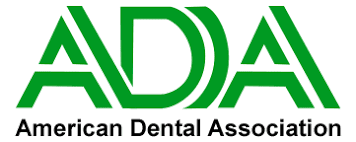For years now I've been impressed with Dandy. They have really embraced the concept of digital restorative solutions and made it priority to bring a lot of digital tech to the forefront of what they do. I got word a couple of days ago about today's announcement and am really happy to be able to provide this here. I'm convinced that this is where the dental laboratory of the future is going and Dandy is doing a heck of a job making it happen.
This is a pretty cool announcement and it was just made public a few seconds ago (literally)... read on for some amazing information.
Live Design Review delivers predictable patient outcomes in just a few minutes
Dandy, the fully digital dental lab, today launched a new suite of real-time visual collaboration features for its pioneering Chairside and case management software for dental practices. Dentists and lab techs can now plan and review cases over interactive video calls, ensuring the highest level of accuracy in the fabrication of dental prosthetics.
With conventional communication, important case details are often lost between the office and the lab in a flurry of disconnected emails, phone calls, and paper documents. Dandy’s digital workspace brings dentists and lab techs together in real time, as if they were in the same room, so everyone can see — and agree — on the case before it’s sent to production.
Dandy’s first-f-its-kind Live Design Review brings cases to life onscreen using detailed 3D visualizations. Working with experienced Dandy lab technicians, dentists can collaborate on cases, request changes, ask clinical questions, confirm adjustments, and approve designs with complete confidence in the outcome.
Dentists can start a review with a Dandy technician within minutes or schedule a meeting for a convenient upcoming date. Dandy also provides specialized Case Planning sessions to map out complex restorations and Implant Planning sessions with surgical specialists.
By collaborating with the lab on a shared digital/ CAD model, dentists can refine designs before Dandy begins production, thereby creating predictable clinical outcomes and eliminating surprises during seating appointments. It all adds up to a better patient experience and more confidence for dentists.
"I recently experienced Live Design Review with Dandy, and it was phenomenal! I’ve never seen a lab with the capability to review a case in real time with a technician. It was incredible to witness—the technology was impressive, and the workflow to schedule it was seamless. Excellent customer service,” said Dr. Alexander Rabkin, Westwood Dental Partners.
Live Design Review is Dandy’s latest innovation in digitizing dental workflows. Dandy offers advanced 3D intraoral scanners at no additional charge and provides on-demand scan reviews while patients are still in the chair. Its 100% digital US-based dental labs use AI, 3D printing and other leading-edge technologies to create restorations with extraordinary speed and precision.
“Dandy has always been focused on delivering exceptional service and results for our customers. Real-time video collaboration is a natural extension of that promise, giving dentists direct access to expert support exactly when they need it,” said Daniel Hanover, co-founder of Dandy. “By making collaboration faster, easier, and more accurate, we’re helping practices deliver better care while growing their businesses.”
The new features are now available to existing customers in early access. To learn more about Dandy’s new offerings and how they are reshaping communication between dentists and the lab, visit meetdandy.com.
About Dandy
Dandy is building the modern operating system for dentistry, powering the world’s most advanced dental labs. Dandy partners with dental practices to transform their business with state-of-the-art intraoral scanners, always-on expert guidance, and precision manufacturing accelerated by AI, 3D printing, and other state-of-the-art technologies seamlessly orchestrated by Dandy's proprietary software. Dandy empowers dentists with technology, innovation, and world-class support to achieve more for their practice, their people, and their patients. With unparalleled quality, efficiency, and experience, Dandy makes the business of dentistry pain-free. To learn more, visit meetdandy.com or our LinkedIn page, www.linkedin.com/company/dandyofficial/.

















